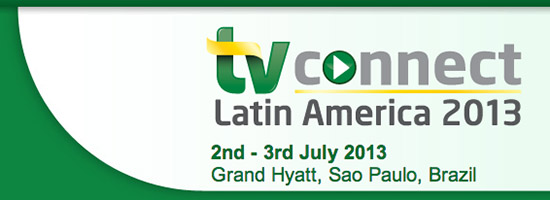
SET EXPO 2017 - What was discussed?
SET Expo 2017 - What was discussed?
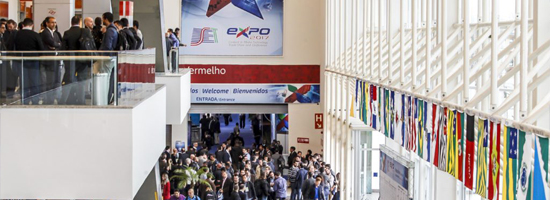
From August 21 to August 24, SET EXPO 2017 presented and discussed technical innovations, regulations and new products in the audiovisual market, covering the entire production chain, from creation through to distribution. At the Congress, the participants discussed how to manage, produce, transmit and distribute multimedia electronic content while debating the current standards and regulations, with the emphasis on the current and future scenario for telecommunications. At the Trade Show, the main domestic and international manufacturers showcased their products to an audience representing the entire audiovisual and broadcasting production chain.
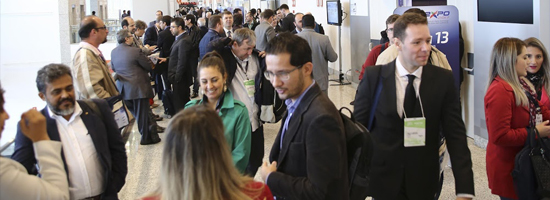
There were many points discussed this year, and the 14 main ones were:
New TV standards, UHD formats and next steps
Kenizhi Murayama, NHK senior researcher, gave an overview of the digital broadcasting service in Japan and the 8K signal, tested on major broadcasts in the country since 2015 (in that year, there was a transmission test, in 2016 a new test was made during the Olympic Games in Rio, and the next one will take place during the World Cup in Russia in 2018, and finally the model of transmission to be adopted for the Tokyo Olympics in 2020). NHK began testing the system on domestic broadcasts last year. And the test of transmission done in Rio last year, in partnership with TV Globo, is the same that we implemented later in Japan.
Another good news is about ATSC 3.0, the groundbreaking standard of terrestrial television broadcasting, that is almost ready, which increases the channel capacity by 30% with improvements in audio and video quality, with multiple audio and video streams, custom content, a wider choice of consumer and transmitter choices, internet interactivity, advanced emergencies and new alerts accessibility features.
There was also discussion about the next steps of the TV based on mobile devices, looking at the total view time for videos growing with the massive growth of views on mobile devices.
Another discussion is about new technologies and trends that could help reduce the compression rates for transmission, on the support of different formats of HDR and transmission networks for the distribution of 4K/8K signals.
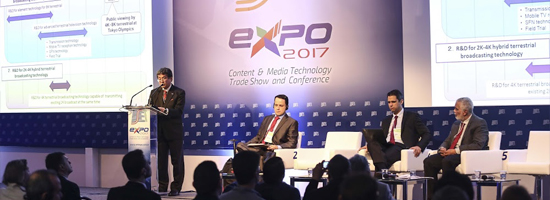
Digital revolution and the new doors that are opening
According to the presentation of the Google executive, Fábio Coelho, the TV set is still the main screen, but its use has stopped growing. By 2015, in the United States, for example, 60% of millennials (born between the mid-1980s and the 2000s) still preferred television, but 26% opted for a computer screen. Mobile gadgets were 14% of preference. By comparison, TV is the choice of 79% of the generation X (born between 1960 and the early 1980s), and 86% of baby boomers born during the post-World War II and 1960s.
Advertising revenue reflects this change and therefore "we should think about video rather than television," Coelho reflected, "and our role is precisely to help companies generate value in the digital economy. The human being remains the same, but today we have very different expectations. The consumer is much more impatient and lazy, and companies need to understand what role they play in reducing that friction." As examples within the company, the executive has shown that Brazil is one of the top five Google countries in the use of platforms and that Waze has Sao Paulo as the main city.
Also, Liliana Nakonechnyi, the president of SET - organizing entity of SET EXPO, analyzed the Brazilian trajectory of the analog TV system until the implementation of the Brazilian digital TV technology (ISDB-TB), created from the Japanese standard. She also said: "We have had a leading role in this movement, but the technology also throws uncertainties on how to adopt tools like IP for video, cloud usage, and other changes."
Masahiko Tominaga, representing Japan's contribution to the deployment of digital TV in Brazil, believes that "success in shutting down the analogue signal in cities as big as São Paulo is an important motivation for other cities in Brazil. Last year, was the celebration of 10 years of ISDB-TB, in 2017 El Salvador also joined this group of 19 countries. This signal pattern was adopted in almost all the countries of South America and Central America in Guatemala, Honduras, Nicaragua and Costa Rica.
More flexibility and scalability: IP in broadcasting
The IP expert at Grass Valley, Robert Erickson, hosted the IP Production: From Theory to Practice workshop, which took place on the afternoon of last Monday, August 21, during the SET Congress. According to the executive, the industry is changing and new forms of consumption are demanding adjustments in the production and distribution chain and business models.
"The means of distribution are very diverse and each requires an image resolution," he says, noting that removing the physical interfaces of the equation allows the construction of more modern solutions that meet modern workflow requirements.
IP can reduce operating costs and provides gains in scalability, flexibility and upgradeability, and broadcast industry is headed for that. And this change will take a while.
Claudio Szabas, the company's project manager, followed a demonstration of Grass Valley IP solutions, noting that there are no changes to the operator, which uses the panel that is already used, and can direct the camera, the IPG and share the multiviewer.
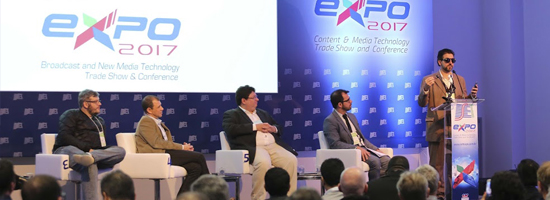
Virtual reality: closer than you think
Many still do not know, and believe that virtual reality is a fad, and others believe it is a trend. Marcos Alves, director of ventures of the Canadian YDreams Global; Renato Citrini, Senior Product Manager, Samsung Mobile Devices Division; and Ricardo Laganaro, director of O2 Filmes, were invited to discuss the issue in the panel on Innovation and Disruptive Technologies that took place on the afternoon of Monday, August 21, during the SET Congress. For them, the cheapening of the equipment, the improvement in the quality of connection to the internet and also of the production must help the virtual reality to reach the masses.
According to Citrini, Samsung has worked to perfect and at the same time cheapen its line of glasses for VR. The latest version of Gear VR comes with a control, the camera is smaller, has more functionality, such as the ability to do live streaming, and is cheaper. "Things evolve at an amazing speed. Anyone can be a virtual reality producer and consumer." The manufacturer has made some bets to increase the consumption of the technology, like transmission of fights of UFC with cameras positioned in the border of the octagon or transmission of shows, one of the most recent one was of the band Coldplay in the United States. Locally there are also some initiatives to increase the offer in the Samsung VR content store.
For Alves, the great opportunities for the diffusion of the virtual reality are the independent games, the arcades of virtual reality, the platforms of distribution and capture of contents, like the NextVR, the possibilities in the areas of education, health and in the industry of the sex. As a content producer, Laganaro is also committed to the development of technology and fast consumer acceptance. "I prefer to speak in immersive narratives," says the director, remembering that those who produce content need to start thinking beyond the flat screen, to learn a new way of operating in the audiovisual, because to produce using virtual reality is a cyclical process involving content, technology, production, narrative and language.
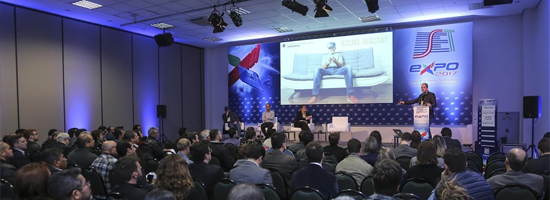
IoT: digital security
Brazil is the fourth country in terms of DDoS-type cyber attacks, in which servers are not properly invaded, but are prevented from functioning. The number is a good index to assess the importance of security for content production and broadcasting companies, an issue explored by experts during the first day of the SET EXPO 2017 Technology Congress.
One of the big doors to the threats are Internet-connected devices, such as smart TVs and mobile phones, which are expected to add up to 20 billion handsets by 2020, according to TV Globo's information security expert Leandro Valente. Often the danger is easy to avoid, as many devices such as security cameras and internet routers have the default password maintained by users. The key is to change the settings at the time of installation. In a universe in which every audiovisual work is available mainly in digital media, companies must also be attentive to their internal processes. 9 out of 10 companies in the country suffer from cybersecurity violations, said Tácito Leite, director of T-Risk. "The Internet of Things is the new frontier for cyber-extortion, but companies do not consider security as a fundamental requirement."
Startups: new technologies and opportunities
With gaps for new companies, new entrepreneurs, the market for audiovisual innovation can be a great opportunity for growth. Most audiovisual productions are still concentrated in traditional media, but lower-cost productions are gaining ground, as the public's attention is drawing.
Today it is possible to capture aerial images at a lower cost through drones, cameras and equipment are more accessible. For example, 360-degree content and integration with OTTs make content profitable, showing that a good idea is enough to become a big business.
"More than money, startups need business opportunities," said Edson Mackeenzy, head of the SET Innovation Zone, a pavilion designed to give visibility to startups working in the audiovisual industry during SET EXPO. "Companies need to invest and believe in national technology."
Also, the president of Abragames and CEO of Webcore Games, Fernando Chamis, addressed the gaming market in Brazil and the world, and gave examples of games made in the country that today are successful worldwide, such as Horizon Chase. "It's a market that has been growing, for a long time, 10% a year," he said. In Latin America, Brazil is the market that makes the most, although the number is still low, due to cost and piracy.
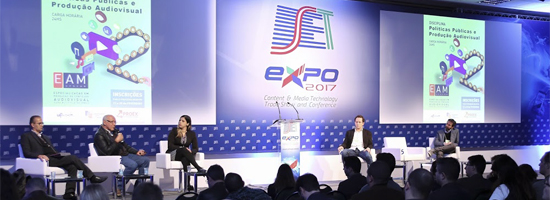
SET EXPO 2017: Business and optimism
The mission of SET EXPO 2017 is to stimulate discussions and offer the solutions to foster the changes of the industry in Brazil towards digital convergence. And the expectation of the exhibitors is that the event move more than $ 40 million in business.
The main point was the convergence of Telecom companies, pay-TV operators, large and independent producers, the advertising market and even youtubers.
In addition, the video market is diversifying and presents several options, highlighting 4K, HDR, IP technologies, all new workflows and formats.
The Technology Congress brought together 1400 congress members in four days of panels with experts from companies such as TV Globo, O2 Filmes, Dolby Laboratories, SBT, RecordTV, Ericsson, Samsung, and more than 40 entities, such as SEBRAE - Brazilian Service of Support to Micro and Small Enterprises; ABRATEL - Brazilian Radio and Television Association; ABERT - Brazilian Association of Radio and Television Broadcasters; AESP - Association of Radio and Television Broadcasters of the State of São Paulo, among others.
Cloud Storage trend
Digital transformation in the industry has changed the way suppliers and broadcasters think and market their experiences and products.
The demand for OTT video services is growing, and since then the budget for cloud services has been following this trend. One of the concerns when it comes to the subject is the security issue.
There is no doubt that the cloud will continue to be a storage trend and that the market dynamics have brought several issues for the companies that use the service, since there must be agile, fast and economical systems. It is worth mentioning that the use of the cloud is not only for end users, but for several sectors, such as the journalistic, in social networks, in post-production.
UHD and Digital Cinema
The innovations and disruptive technologies point to ongoing transformations that encompass audiovisual productions in multiple screens and windows. In the stations there is the expectation of the arrival of the 4K, something that already is reality in the cinema.
In addition, there are many goals in a fully digital environment, especially in post-production, in process planning, always ensuring maximum quality.
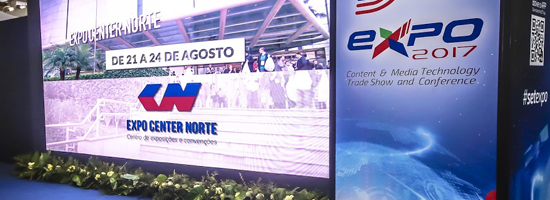
IP and Satellites
Satellite industry is going through a very special moment, not only from an application point of view, but also from a technology standpoint. And consumer behavior dictates the need for new IP technologies.
With the IP universe, new applications will have room for video and audio. The trend is that satellite companies become IP video companies, even if it is a conservative market, changes are expected to occur more and more.
Switch-off: Lessons and what’s around
The switch-off in Brazil has worked well and every city that enters the digital age there is a new learning. The instruction of the population and the installation of adapters has had a positive return, even if at the beginning they had a concern with the distributed kits.
One of the concerns was the audience issue, whether the transition would cause the audience to fall due to signal change, but studies showed that there were no changes.
In addition to the concerns, it is relevant to say that the market has grown as people began investing in new TVs.
Digital era: Real experiences and audience
Engaging consumers with experiences is the best way to ensure audience in the entertainment market.
The phrase that sums up the new consumer mode of media is: Unique experience. The idea is to bring people on different platforms to the same point, in order to establish a relationship, loyalty to the client using the convenience of digital and preserving the best in the face-to-face experience.
The trend can be seen through data, according to research conducted by Marcela Doria, director of research for Twitter in Latin America, 9 out of 10 people declare that the smartphone is the most used device to access the Internet, and 7 out of 10 multiteels are declared. That is, many people use the smartphones while watching television, for example. In Brazil alone, more than 1 million tweets per day are related to TV. Twitter today is the smallest distance between the viewer and the content, and the tool is able to contribute about 13% to the audience of a show, with even greater force in live events such as the Oscars.
OTT in Brazil and worldwide
According to the research presented by Salustiano Fagundes, founder of HIRIX Engenharia de Sistemas and CEO of HXD Smart Solutions, the OTT market will reach US$ 64 billion worldwide in 2021, with US $ 3.59 billion being only between Brazil and Mexico, who should lead Latin America and occupy, respectively, the fourth and fifth global posts. As for the survey conducted in the United States, consumers spend 45% more time choosing what to watch on VOD services than looking for a program to watch on linear TV, and 4K video streaming is growing, with Netflix and Amazon broadcasting on that quality.
Meanwhile, NHK's senior research engineer, Masaru Takechi, who works to deploy and harmonize the Hybridcast, a second-screen and VOD/streaming service said that in Japan, more than five million people use the system, with flexible selection of content, generating targeted advertising and a similar content relation.
The director of digital platforms Globo.com, Marcello Azambuja, talked about the live streaming company. The first was the Big Brother Brazil and in 2003, the first OTT of Brazil was launched, the Globo Media Center, and in 2005 it had the broadcast of the NBA final. In 2010, at the World Cup, the site made the broadcast for the first time in HD. And in 2014 had the first multi-camera live stream. He complements saying about the availability of 4K content available on Globo Play.
Migration of AM radios
Radio is one of the most accessible and popular media worldwide, and the migration of AM to FM broadcasters has moved companies and regulators in Brazil.
RBS project manager, Cauê Franzon, showed that conventional radio is still 58% of the audience between 10am and 11am, and 15% of cellphone listeners between 2pm and 3pm. Only 5% listen through the computer between 2pm and 3pm. The data compiled by Ibope show that radio reaches 89% of people in the 13 metropolitan regions where the audience is measured, which is equivalent to 52 million people. The average time of the tuned is of 4h36, which shows a space of great growth in mobile devices.
The great effort needed to accommodate the stations that will migrate from AM to FM is much discussed, and we are likely to see more discussions about it, to make the switch as smooth as the switch-off is on TV in Brazil.
If you want to see how the fair was, visit the link.
In this video you can view some of SET Expo 2017:
We would like to thank Marcel Almeida for writing for us.
More info you can find on his LinkedIn: br.linkedin.com/in/marcelmg77/en or follow him on Twitter @marcelmg77
Like us if you want on Facebook, follow us on Twitter and Subscribe to our YouTube channel.
mentioned:
SET EXPO 2017 : Website - facebook - Twitter - YouTube
SET : Website
SET EXPO 2016
SET Expo 2016
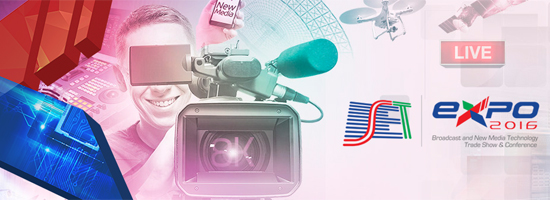
One of the major events in the broadcasting and new media sectors of the year took place at Expo Center Norte, SET EXPO 2016, in the Exhibition Hall Red, São Paulo (SP). With Conference: 08/29 to 09/01 and Trade show: 08/30 to 09/01.
Organized by SET (Sociedade Brasileira de Engenharia de Televisão), a not-for-profit technical association consisting of technology and operating companies and professionals and whose main purpose is the development of technical knowledge throughout the entire electronic media supply chain, from production to delivery. In Brazil, it represents the largest discussion forum on market standards and trends for the creation, management and distribution of electronic content.
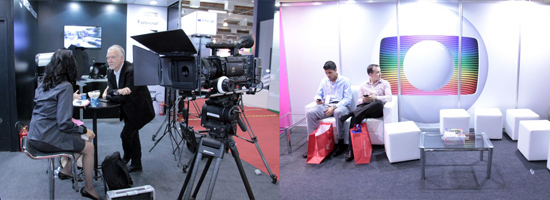
The event will host the major manufacturers on the global market; executives and technical personnel, specialists as well as researchers from government bodies, plus the press, technology, entertainment and broadcast sectors.
Last year, in its 27th edition, 15.900 participants attended the 5-day event, with the presence of 2.040 conference delegates, 150 members of the press, 5 international pavilions, 192 exhibitors, 8.000 m² net exhibition area and more than 400 exhibitor brands.
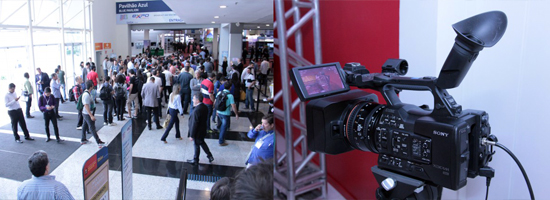
The event, this year, will had an exhibition area of 15.000 m², housing the stands of benchmark companies in the equipment, technology and services sector of the broadcast, telecommunications, audiovisual and new media market. This area will consist of thematic and international pavilions, made it easier for visitors to find their way around.
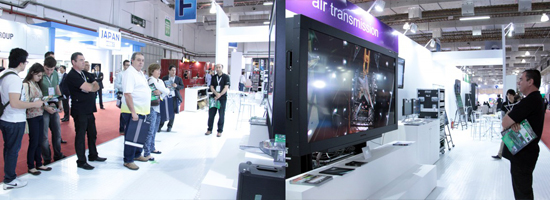
A program to support startups that create solutions for the entertainment industry, such as audiovisual producers, radio and television broadcasters, the cinema and new media will be at SET EXPO 2016, and it is called SET Innovation Zone.
SET Innovation Zone program had two stages: the public call, with free and open registration, and the presentation of the solution at SET EXPO 2016. And the 10 companies selected will receive a standard exhibition stand, already assembled, within the Innovation Pavilion of the trade show, and did showcase themselves, completely free! This was a unique opportunity for companies in the initial set-up phase. If you have any interest, it is worth taking a look at for more information.
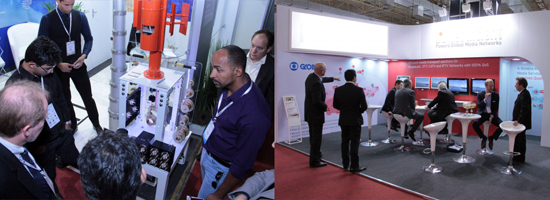
The topics to be discussed during the Congress were:
August 29, 2016: Distribution, Exhibition & Transmission: TVD – Analog Switch Off, Automation; Internet & TV: Sensoring & Big Data, Content On-line, OTTs & APPs – Current scenario of OTT services, Projects And Professional Profile; Hot Session: The Future of free-to-air Television; Innovation & Disruptive Technologies: VR – “Will Virtual Reality be the most social platform of all?”; Infrastructure: Energy - Quality and Efficiency; Research & Development: Vision of communicators regarding to the future of broadcasting and new media; Regulatory & Norms: EAD – Be Digital - The Rio Verde (GO) pilot experiment, preparations for Brasília and São Paulo and projections for Brazil; Innovation & Disruptive Technologies: Drones; Consumption: Connected TVs and interactivity.
August 30, 2016: Opening & Commemoration: Opening Ceremony SET EXPO 2016 & ISDB-T 10 years celebration; Trade Show SET EXPO 2016: Inauguration Fair SET EXPO 2016 – RED Pavilion – ground floor; Hot Session: Analog Switch Off; Internet & TV: IoT – Internet of Things & Swarm Intelligence, Network Neutrality - Internet Regulatory Framework; Research & Development: Innovation in teaching technology, Academic & Scientific, ICT - Japan Context; Regulatory & Norms: Regulatory Processes; Content Production: Technology in News and Sports, Audio & Acoustics; Innovation & Disruptive Technologies: NHK Lab – What is coming in next 10 to 20 years?, SMPTE Centennial.
August 31, 2016: Radio: OM x FM migration reflexes, Radio, Internet, Music and Mobile, Efficiency Aspects of FM Transmission, 80 years of Radio Nacional; Hot Session: Challenges VOD & OTT; Research & Development: High Dynamic Range Master Class; LATAM: The Future of Television Programming, Consumer Market; Infrastructure: Cloud, Non-Ionizing Radiation (NIR) Standards at Sites, How hardware virtualization must contribute to the future television; Content Production: ITU & American Spectrum Auction, 4K/8K, UHD Premium Certification, HLG, PQ, WCG, HEVC HDR10, Olympic Games, Interference TV & 4G, Storage; Regulatory & Norms: Accessibility.
September 1, 2016: Keynote: UHDTV – From Production to Distribution; Internet & TV: Digital Security & IEEE Ethernet Alliance; Hot Session: UHDTV- From Production to Distribution; Consumption & Audio Visual Production: Displays, Displays (stage) & Interaction, Projection systems, Lighting; Content Production: Virtual Scenarios and Games, Contribution kits; Distribution, Exhibition & Transmission: Evolution of space segment for contribution and distribution in the era of Ultra HD 4K, Streaming and distribution IP - Challenges, Transmission systems; Research & Development: Ultra High Definition.
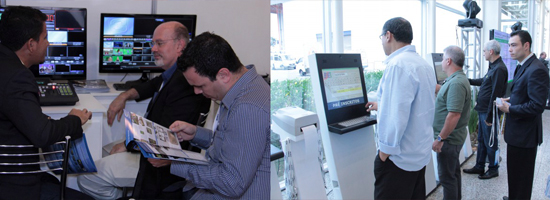
Stay tuned in those numbers:
Conference: August 29 until September 1, 2016:
Trade Show: 12 noon until 8 pm;
Conferences: 9 am until 8 pm;
Expo Center is located in José Bernardo Pinto street, 333 - Vila Guilherme, São Paulo – SP.
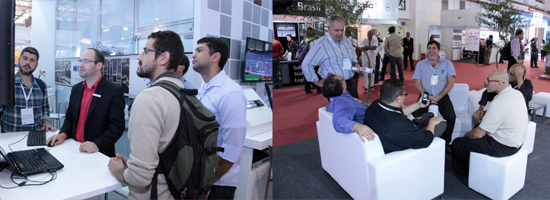
In this video you can view some of SET Expo 2016:
We would like to thank Marcel Almeida for writing for us.
More info you can find on his LinkedIn: br.linkedin.com/in/marcelmg77/en or follow him on Twitter @marcelmg77
Like us if you want on Facebook, follow us on Twitter and Subscribe to our YouTube channel.
mentioned:
SET EXPO 2016 : Website - facebook - Twitter - YouTube
SET : Website
Expo & Conference - ABTA 2016
Expo & Conference - ABTA 2016
One of the most traditional events on pay TV and digital services in Latin America will took place this month in São Paulo at Transamerica Expo Center, from 29 June to 1st July, the ABTA Expo & Conference 2016.

In the year of the Olympic Games in Brazil, ABTA completes 24 years bringing innovations in pay-TV, broadband and media market, focusing on innovation in video services, new technologies, on-demand content distribution platforms such as IPTV and OTT, advertising, satellites, TI, and distribution of linear, non-linear and high-definition content. The Conference will had presentations and panel sessions by highly qualified speakers with professionals from channels, ad agencies, operators, regulators and government. The immersion in technology and management trends will be available in Pay-TV Seminars (STAs), also training seminars with presentations of case studies and market solutions, that is essential to know what is new about technologies and pay-TV tools.
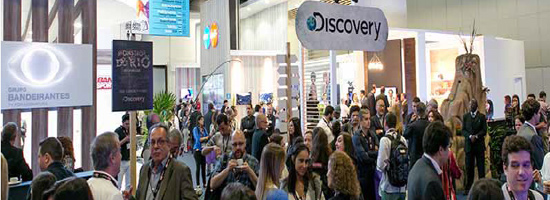
The issues to be addressed in the STAs are: The new consumer of video, DOCSIS 3.1, Advances in multiplatform delivery, The new generation of headends, Sincab, The Internet of Things (IoT), Technology that makes new business models possible, User interfaces for set-top boxes, The road to delivery of content on multiple platforms, How pay TV will develop in the next five years, CxOs and The evolution of pay-TV services.
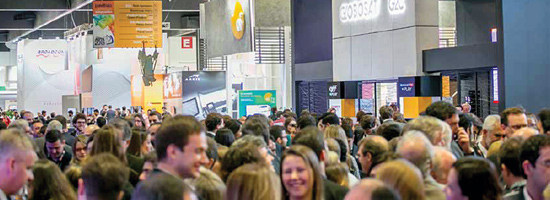
In the Conference program, we have in strategic panels: The reality of the industry and the policy/regulatory outlook, Pay TV in a year of Olympics and challenges, From set-top to cell phone: how pay TV services evolve, Advertising and the Olympic Year, The value of digital services to consumers. In Thematic Sessions we have: The Internet: from the reality of services to regulatory models, User experience and digital services, Audiovisual regulation: from SeAC to VOD, Tackling digital clandestinity, The importance of sports programming to pay TV, Programming in the age of ultrasegmentation, Advertising: consolidation and the role of pay TV, Embracing the reality of on-demand content, Why local production is flourishing, What has happened to C class consumers?, From TV to 4play: the evolution of bundles and offerings and Growing in turbulent times.
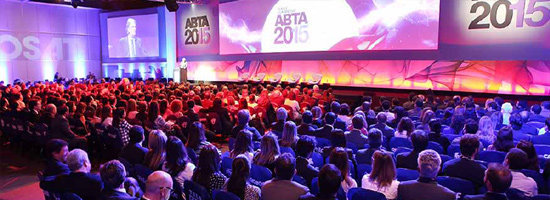
Local and international exhibitors did showcase their brands and developed new business leads in an exhibition space of 9000 square meters.
video:
We would like to thank Marcel Almeida for writing for us.
More info you can find on his LinkedIn: br.linkedin.com/in/marcelmg77/en or follow him on Twitter @marcelmg77
Like us if you want on Facebook, follow us on Twitter and Subscribe to our YouTube channel.
mentioned:
ABTA 2016 : Website - YouTube
IPTV in Brazil
IPTV in Brazil
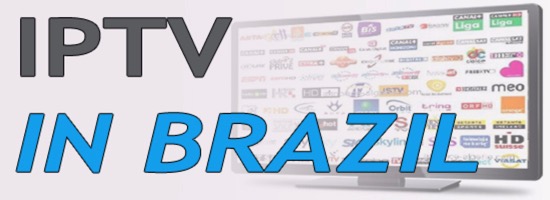
The demand for better quality, greater variety of content, option to consume interactive services are the main points for the growing of the technology and fall in the taste of users. The Television over IP is an alternative technology to DTH that instead of using satellite systems uses a part of the internet bandwidth. This requires a set-top box to change the IP signal to your television. To be able to use the service you need at least an exclusive connection of 4 Mbps for HD content with MPEG-4 compression. However, each channel determines the transmission rate, such as Globo TV that requires HD programming delivering to the client at 18 Mbps.

In addition to the interactive system, you can do purchases, access movie sites, videos, music and photo presentations without the necessity of a computer. In the security system can highlight two transmission systems, CAS (Conditional Access System) where there is control of transmission of a service to the consumer; and DRM (Digital Rights Management) that allows or not the use of digital imaging products, video or audio.
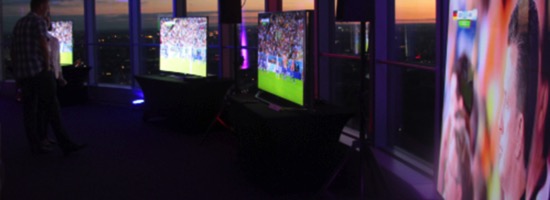
In Brazil, the pioneer was Brasil Telecom with Videon in Brasilia (DF), allowing the viewer to acquire films, documentaries, cartoons, concerts, shows and exclusive content that go beyond the concept of broadcasting, as a combination of telephony services directly on television. Today there are some initiatives at Telefônica, Oi, CTBC and Sumicity in Rio de Janeiro.
Another trend is the Unicast mode, since the possibility IPTV content and flexibility, such as on-demand services. The programming grid (EPG) customization is a one-way, in case of interactivity, and there is a lot of opportunities, exploration and a lot of research to do in this field. It is worth mentioning that connectivity with mobile devices is essential to the success of IPTV and the possibility of content in 4K and 8K with compatible TVs.
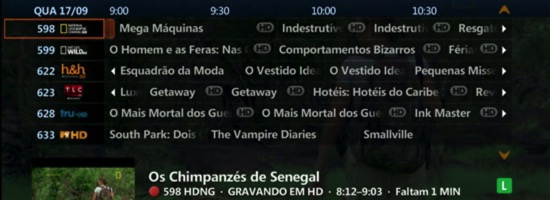
The success of the service will depend on some regulatory obstacles and other technologies such as FTTH, with the aid of optical fiber on delivery of a service with great quality. The QuadPlay with IPTV can replace the use DTH, excluding satellite system dependence, which in adverse conditions the signal may be interrupted, such as during storms or co-exist in a hybrid way. In 2015, the increase in service was 43.24% compared to the previous year, DTH had 60.07% of the market in July 2015, against 61.01% in December 2014 (according to data from Convergecom).
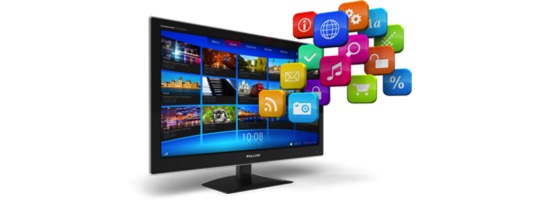
Among the problems faced in Brazil to implement the mass service, there is the limitation of Internet quality (great use of radio, instead of optical fiber) and outdated infrastructure that do not support enough amounts of data. It is therefore essential investment in fiber and high-capacity backbones for the proper functioning. By the end of this year, it is likely that Brazilian market grows along the upgrades of IPTV.
More news on the subject and future trends, you can see here in Broadcast Brazil.
video:
We would like to thank Marcel Almeida for writing for us.
More info you can find on his LinkedIn: br.linkedin.com/in/marcelmg77/en or follow him on Twitter @marcelmg77
Like us if you want on Facebook, follow us on Twitter and Subscribe to our YouTube channel.
mentioned:
Brasil Telecom : Website - Facebook - Twitter - YouTube
Telefônica : Website - Facebook - Twitter - YouTube
Oi : Website - Facebook - Twitter - YouTube
CTBC : Website - Facebook
Sumicity : Website - Facebook - Twitter - YouTube
Expo & Conference - ABTA 2015

The ABTA 2015 takes place in a year that promises many challenges for the sector. The growth levels that Brazil, as a country and also in the broadcasting sector, experienced in previous years might not be shown this year, but there is a lot of development going on. At the same time, Brazil continues to receive investments of, for example, cable operators that are implementing new networks, and launching new satellites for Direct To Home (DTH) content delivery. On the programming front Brazil sees several launches of international and national channels, that will have to compete for space at the broadcasters. New companies are aiming at the national market, such as AT&T, with the acquisition of SKY's parent company, and Dish, which still has plans in Brazil.
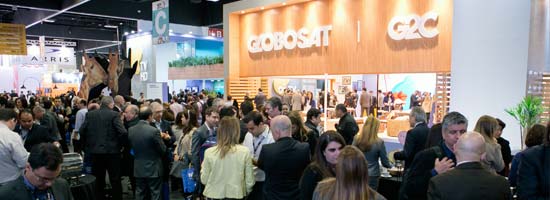
ABTA will take place in the Transamérica Expo Center in São Paulo (SP), on August 4, 5 and 6 , 2015. At the ABTA Conference, there will be debates on the future of pay TV, focusing on innovation in video services. Highlights at the event, will be technology showcases and content distribution solutions such as video on demand, IPTV and over-the-top platforms (OTT), as well as advertising, satellites and IT, and the innovations in linear and high-definition content distribution. Besides that, there are technologies and business in the field of video on-demand platforms, cloud DVR, new user interfaces and innovations in IT and access control.
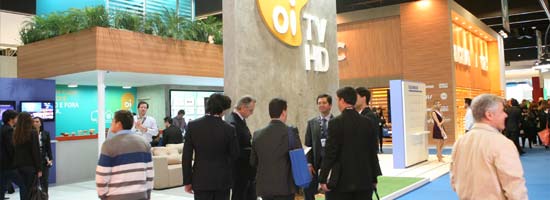
This year, there will be a large exhibition space with more than 100 exhibitors from Brazil and the rest of the world, using the opportunity to showcase brands and leverage new business opportunities. Last year, some of the exhibitors were:
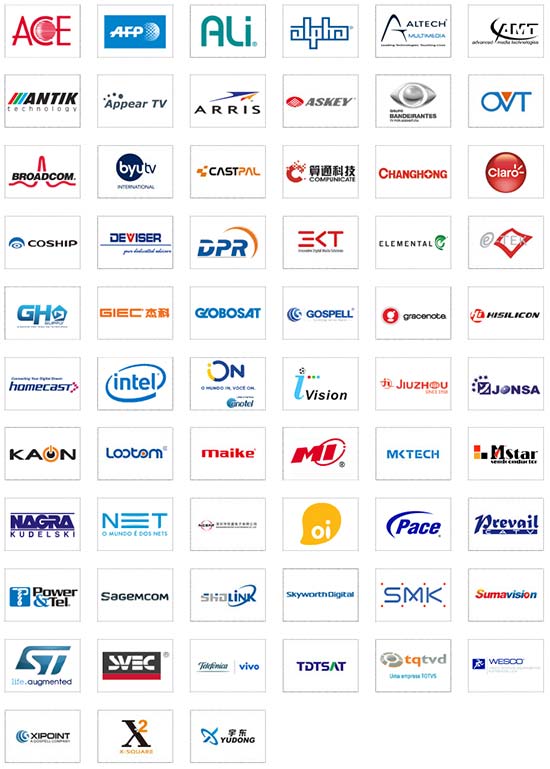
During the conference there will also be panels and discussions on markets, regulation, new technologies and trends, with the participation of executives and key representatives of industry and government. There will also be Pay TV Seminars (STA) with case studies and market solutions.
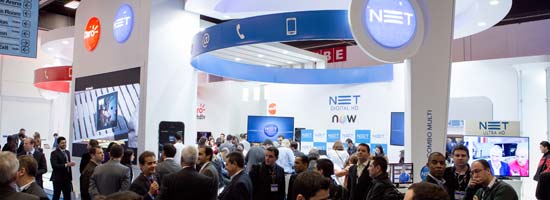
ABTA Expo & Conference has this year the following program:
Tuesday, Aug. 4:
PANEL 1: Sectoral policies and current challenges.
With the sessions: The present and future of the pay-TV market; Free-to-air channels: what changes with digital; The challenges of regulation in the non-linear world; Consumer rights, RGC and service quality; Rights, IP and financing in pay-TV programming; Signal theft: approaches and results
Wednesday, Aug. 5:
PANEL 2: Programming and regulation: results and adjustments;
PANEL 3: Pay TV, the media market and the future of advertising.
With the sessions: The performance of audiences and channels; New formats for advertising; Economic scenarios and growth: where the industry is heading; Pay-TV advertising success stories; Churn and customer loyalty: challenges of a competitive scenario; The future of pay-TV advertising
Thursday, Aug. 6:
PANEL 4: Non-linear TV: a concrete reality.
With the sessions: FTTH, satellite and OTT: directions taken by new operators; Lessons of international experiences; Broadband: strategies beyond bundling; Multiplatform programming.
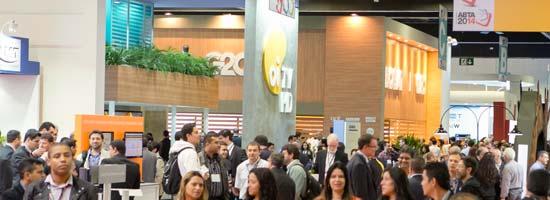
ABTA 2015 is expected about 9.500 people on average in the three-day event, 3.000 more than last year, with more than 10,000 square meters of exhibition space.
Transamérica Expo Center is located close to the city’s main business centers and office districts, and only 12 km from Congonhas Airport, with easy access to Marginal Pinheiros and Av. Washington Luis in Av. Dr. Mário Villas Boas Rodrigues, 387 Santo Amaro – São Paulo – SP – Brazil.
In YouTube Magazine TV channel you can view some of ABTA 2014 and what's to come in 2015.
video:
Info on lectures and more you can find accessing the official website.
We would like to thank Marcel Almeida for writing for us.
More info you can find on his LinkedIn: br.linkedin.com/in/marcelmg77/en or follow him on Twitter @marcelmg77
Like us if you want on Facebook, and follow us on Twitter and Subscribe to our YouTube channel.
mentioned:
ABTA 2015 Magazine TV
PANORAMA AUDIOVISUAL 2015
FAIR AND CONGRESS: PANORAMA AUDIOVISUAL 2015
May 2015 in São Paulo Expo (formerly Centro de Exposição Imigrantes), will occur the biggest event in the Broadcast & Cable segment in Latin America. The previous edition, in 2014, showed growth and maturity of the digital audiovisual market, with over 100 hours of training and more than 90 conferences related to the digital audiovisual industry, with over 1000 participants at the event.
Panorama Audiovisual is aimed at creative professionals, production and distribution of audiovisual content on the platforms like TV, film, radio, broadband, mobile and new media.
Since selecting a tripod for cameras, exhibition systems to transmission, Panorama Audiovisual works to provide qualified information which assist professionals in technical choices and equipments that ensure the best results.
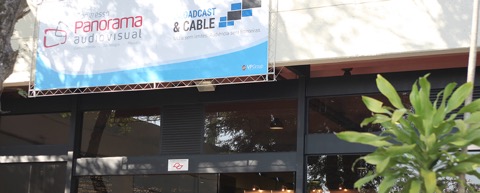
The congress offers reports, dossiers, analysis and interviews brought by professional experience, sucsess stories and reviews of new and basic technologies, with firsthand news.
Panorama Audiovisual is an editorial product of VP Group Integrated Communications, a company based in Alphaville (Barueri/SP, Brazil) and office in Miami (Floria, US) and Madrid (Spain). This structure allows the publishing of magazines and websites - world leaders in the segment, according to Google Analytics - covering Latin America and the Iberian Peninsula.
The president and CEO of VP Group said -- "This finding has encouraged us to expand the scope of the events we do, distributing them throughout the year."
The mission of the congress is discuss technologies and strategies that moves the Brazilian's audio and video market. Since the selection and operation of cameras and editing software to media monetization, every niche of this market will be treated in various discussion sessions, workshops and tutorials of the event this year. "In 2015, we will expand further this debate and the training and professionalisation programs", says Fernando Jay, director of the event.
"Therefore, it is fundamental an event like this, which encourages the professionalism of the entire industry and opens opportunities of updates and training for sector professionals to follow the latest trends of this innovative and dynamic market", says Victor Piiroja, President and CEO of VP Group.
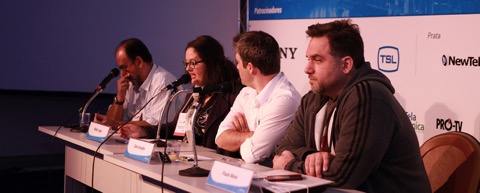
The main themes of the congress, dedicated to professional development and promotion of new technologies, will be solutions for production and distribution of audio and video on TV, film, new media, advertising, animation and games.
Among the topics, the themes are:
• Migration to 4K, H.264 and HEVC;
• Cameras and Lenses for Digital Production;
• Resources for Digital Cinematography;
• Recording in Multiple Codecs and Resolutions;
• Editing and Post-Production Systems;
• Color Correction and VFX;
• Applications for HDR and HFR;
• Automated Production of Journalism and Sports;
• Coverage of Competitions and Shows;
• New Lighting Technologies;
• Generation of Graphics and Virtual Sets;
• Integration with Social Media;
• Storage and Restoration;
• Media Management and Big Data;
• Cloud Based Services;
• TV Everywhere: Multiplatform Distribution, IPTV, VOD and OTT;
• Broadband and Pay TV;
• Infrastructure and Network Planning;
• RF Transmission, Satellite and FO;
• Quality Control and Signals Monitoring;
• Infrastructure for Technical Centers;
• Processing, Conversion and Playout;
• IP Based Production;
• Dispute of the Spectrum and the future of Broadcast;
• Analog Switch-Off and Digital TV Expansion;
• Radio in a scenario of Media Convergence;
• Interference and Wireless Networks;
• Transmedia, Connected TVs, APPs and Second Screen;
• Acoustic and intelligibility;
• Capture and Multichannel Audio Mixing;
• Immersive Audio;
• Loudness Control in Broadcast Ambience;
• Digital Cinema and VPF;
• Digital Projection Technologies;
• Education and Innovation;
• TV Series, Webseries and Interactive Narratives;
• Games and Animations;
• New Sources of Revenue;
• Incentive Laws and Fundraising for Audiovisual.
The existing sectors during Panorama show 2015 will be: Open TV, Pay TV, IPTV, Wireless Media, Radio, and Internet and streaming, Telecommunications, Satellite, Broadcast-cable, Digital Cinema, IT, 3D, Digital Signage, Education and Training
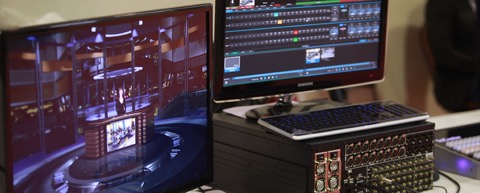
You can watch some videos of what happened in the previous edition:
We would like to thank Marcel Almeida for writing for us.
More info you can find on his LinkedIn: br.linkedin.com/in/marcelmg77/en or follow him on Twitter @marcelmg77
So we hope this is, besides, fun to read, also a good help and insight information about broadcast events held in Brazil and what the future may hold.
Like us if you want on Facebook, and follow us on Twitter
mentioned:
Interview: Marcio Zukin, CTO SimTV

IPTV News Editor Jamie Beach interviews Marcio Zukin, CTO of Brazilian over-the-top video service Sim TV, on plans to move into transactional and ad-supported offerings, the television services that Brazilians value most, and the opportunity created by pay-TV piracy.
Marcio will be speaking at the TV Connect Latin America 2013 event taking place in São Paulo on 2nd-3rd July. For more information and to register, please visit latam.tvconnectevent.com
Jamie: Can you tell us a little about SimTV’s connected TV initiatives to date?
Marcio: Our connected TV initiatives include subscription VOD and live TV. SimTV was designed for delivery on every kind of device and also through an IP Box.
Eventually the platform will be developed in order to feature transactional and ad-supported services.
The focus of the project was to provide a very robust solution, using adaptive bit-rate technology, CDN networks and global data centres in the cloud, in order to deliver the best interface and a user-friendly workflow to the customer.
Jamie: What do you think Brazilians value most in a television service, beyond linear programming?
Marcio: There is a need to differentiate between content and service. In terms of content, Brazilians in general value football games and sports, movies, kids programming and comedies or sitcoms.
Regarding services, Brazilians value innovation, programmes with social comment and interaction, and which are up-to-date and available on a 24-hour basis.
Jamie: How big a problem is pay-TV piracy in Brazil?
Marcio: Pay-TV piracy in Brazil is not a problem, it is an opportunity, and a big one.
Let me explain. In my opinion, people turn to piracy for a number of reasons, almost as an ‘after the fact’ event.
If people would have a service, with reasonable quality, at an affordable and fair price, with dependability and good customer care, there would be no need to resort to illegal practices regarding pay-TV.
Many initiatives have already demonstrated this vision.
Jamie: What growth opportunities can you see in the pay-TV market?
Marcio: The pay-TV market has huge growth opportunities, in volume and quantity. Various industry surveys project that there will be 4.4mn active clients for IPTV services by 2017 in the Latam countries alone.
A huge variety of content and types of service is emerging: for example, an Italian that lives in Rio could watch live an Italian game in Recife at his tablet, early in the morning while still in bed.
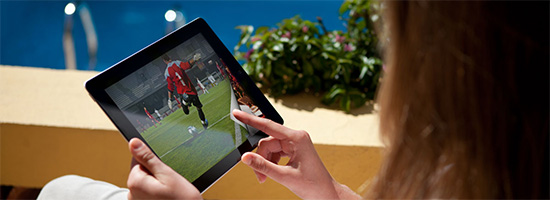
Then a few hours later he could be watching a recent specific Italian movie back in his apartment simultaneously (in a social network) with his friends that live in Italy.
While watching the movie, he uses the tablet as a second screen not only as a remote control but also to buy something that appears in the movie in an e-commerce site, or get more information on historical events related to a character of the movie, post a note on Facebook, and so on.
Event video:
Be sure to check the Broadcast Brazil Facebook page and LIKE us.
Lot's of news, photo's and info for broadcasters, webcasters and mobile producers in Brazil.
Mentioned:
Sim TV
TV Connect Latam
Exclusive Interview with Viaccess-Orca’s EVP Corporate Strategy
Exclusive Interview with Viaccess-Orca’s EVP Corporate Strategy.

ABTA2012 has finally arrived(!) and we were fortunate enough to catch our EVP Corporate Strategy, Hamdane Noureddine, for a few questions about piracy and security just before he goes on stage and participates in the ABTA2012 panel “Combating piracy: strategies and approaches” (Aug. 2nd, 11:00 am).

Noureddine, can you walk us through the history of Pay TV piracy? How has it changed over the years?
The history of Pay TV piracy coincides with the history of Pay TV and goes back to the 1980s.
At the time, it was more of a hobby / non-lucrative type of activity. Some engineers would handcraft pirate devices for themselves and their relatives. Today, Pay TV piracy has become a sophisticated global industry involving hackers, high-tech laboratories, manufacturers and distributors from across the globe. Internet has also played a major role in facilitating the worldwide distribution of pirate devices.

How do you think piracy will evolve? And how will Viaccess-Orca meet these challenges?
Since content security solutions have also evolved, and conditional access smart cards have become very hard to hack, there are now new ways to pirate pay TV signal without the need to crack a smart card. Among them is what we call “Control-word sharing” which consists of using a counterfeit set top box especially designed for CW-sharing services.
Viaccess-Orca has developed an innovative solution to tackle these new piracy technics. On the one hand, we have implemented chipset pairing which makes CW-sharing inefficient for those customers who use controlled set top box i.e., do not support grey market non Viaccess-Orca certified STBs.
On the other hand, our latest generation of smart cards includes detect & sanction mechanisms that enable us to detect when an illegal smart card is being used in CW-sharing and our customer (the content service provider) can decide what sanction to take in such a case.

In your opinion, is Cardless technology more or less efficient against piracy than card based solution?
This is a very good question as there is a lot of confusion surrounding this topic. This confusion is caused by various players who are trying to convince others that they can achieve the same level of smart card security with cardless solutions.
The truth is that a robust content security requires a combination of hardware, software and networks security elements. Even the so-called “cardless solutions” rely on hardware elements that are built-in the set top box chipset or around it.
For this reason, I prefer to call such a solution an “embedded CAS” as they tackle the issue of embedding hardware elements in the set-top box. While we can discuss the respective operational flexibilities of smart card based and embedded CAS, its clear that each has its own pros and cons.
But when it comes to the level of security, smart cards provide, and will continue to provide, the ultimate level of hardware security.
What are the new challenges brought about by multi screen?
With multi-screen, content service providers have to make their content available not only on the devices they control (managed devices like set top boxes) but also on consumer electronic devices that they do not control (unmanaged devices).
This raises technological challenges especially when it comes to protecting content on devices that are insecure by design such as Android devices.
It is vital that the level of security on all such devices be optimum as the principle of the weakest link applies and pirate attacks would focus on the less secure implementation.
Providing a robust content security on all types of devices, requires very special skills and expertise that only few players actually have.

How much damage can piracy cause the TV industry?
The cost of piracy to the TV industry worldwide is estimated at billions of Dollars and this figure continues to increase over time.
The industry needs to continue investing in content security. Despite the economic pressure we still advise content service providers to resist the temptation to go for low cost solutions and select content security vendors that are committed to supporting them in the long-run; This support is implemented not only by providing the most advanced technology but also by assisting in all fronts of the battle against piracy including legislation (help with lobbying for legislation that would enable the prosecution of pirate organizations, etc.), education of Police and Custom Authorities (to help them identify counterfeited pirate devices), investigation and tracking of piracy networks across the globe, monitoring of content sharing over the Internet.
All these are part of our 360° anti-piracy strategy. A strategy which our customers are very satisfied with, given the peace of mind they enjoy by having a partner like us which is fully committed to protecting and enhancing the value of their content services.

For more information about Viaccess-Orca’s solutions , products and this article, click the links below.
We thank Morad Stern and Viaccess-Orca in sharing this post with Broadcast Brazil.
mentioned:
Hamdane Noureddine
Viaccess-Orca
ABTA2012
Original article
